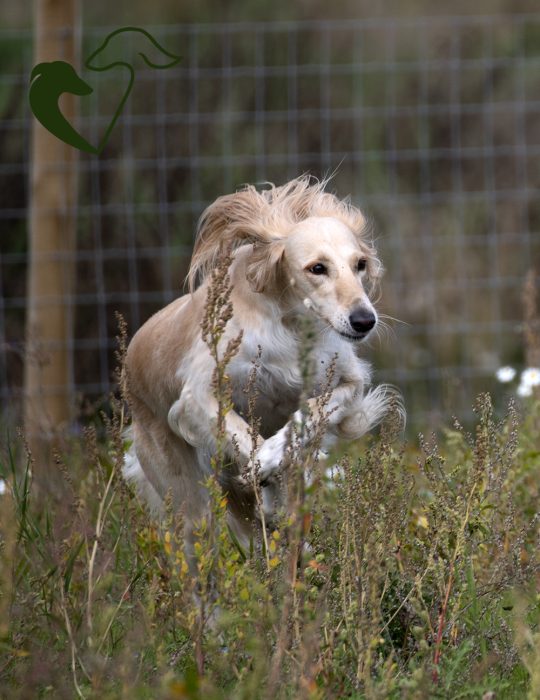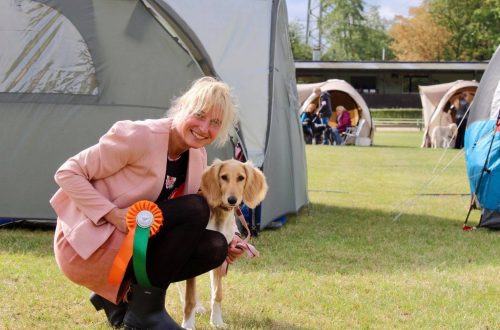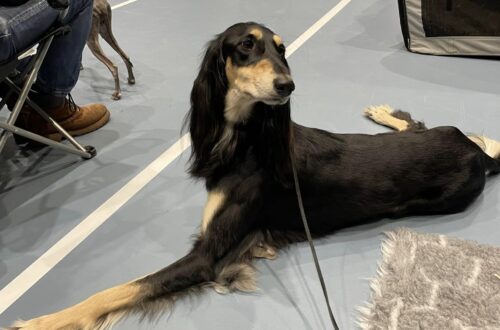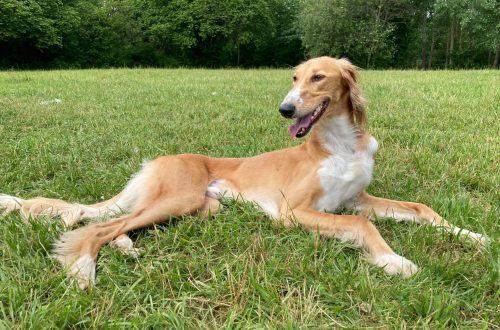Possible colors of planned litter

There are many things to look for when planning a litter. Health of the ancestors, loss of ancestors and inbreeding coefficient, male’s and female’s strengths and weaknesses and so on. All these things we look at prior to deciding the male. But once this has been decided and the loooong waiting for the female to get in the heat starts, we look forward to things like for example the possible colours of the puppies.
So in this post we will share some basics about colours and which colours of the little ones we hope for.
There are many genes that determine the colour and the colour patterns of the dogs’ fur. To keep the below text simple we are not going to look at the amount of white that puppies in this litter can get (no white, Irish marking or particoloured). But we can say that Oonah herself has Irish marking and can give such puppies. We are also going to assume that both parents carry only black genes (no chocolate gene) and that both are not going to give puppies with black mask.
Each locus comes with two alleles (one coming from the dog’s mother and one from dog’s father). Following locus are the ones we will look at:
E locus:
Eg – grizzle allele, the most dominant of the three. One Eg is enough to give grizzle marking on your saluki.
E – allows black or brown to be shown. Recessive compared to Eg but dominant to e.
e – prevents black from showing. As this allele is the recessive to the above ones you will need two of them to prevent black from showing.
In order to express the E locus related colours at/at must be present.
A locus – agouti:
There are several alleles on this locus but only two are found in saluki:
at – tan pointed – recessive to ay which means that your puppy must have two of these for E locus (tan org grizzle) marking to be visible.
ay – sable – puppies with this colour are often born dark and the black on their hairs gradually diminishes until their permanent/adult colour is shown. Only one of these alleles is needed for a puppy to be sable.
Now let us look at some examples:
Eg/E at/ay – will result in sable as we only have one at and we need two for E locus to be expressed.
Eg/E at/at – will result in grizzle as Eg is dominant over E.
E/e at/ay – will result in sable puppies.
E/e at/at – will result in black and tan/silver.
e/e at/at – will result in anything between white and red.
With that said, let us look at the colour codes of parents to be in regards to these locus.
Milan – must have at/at as he is black and silver. He can’t carry Eg (grizzle) as it is dominant to E (black and tan/silver) and would have made him grizzle if he had one. So we can assume that he is E/e or E/E and at/at.
Oonah – is tested to be Eg/e at/ay – sable, but she also carries grizzle allele (Eg).
So which colours can these puppies get? Now please remember that we are talking statistics here and that nature not always follows theory.
Sable in all shades (fawn or red with black fringes)– as Oonah has one ay allele.
Grizzle in all shades (silver to red) – as Oonah carries one Eg allele.
Black and tan or Black and silver – As Milan has at least one E allele.
We may even get some creme, white, golden or red ones. But only if one of Milan’s E alleles is actually an e.
And because of the above possible colours I am really excited to see how the mother nature will distribute them.




